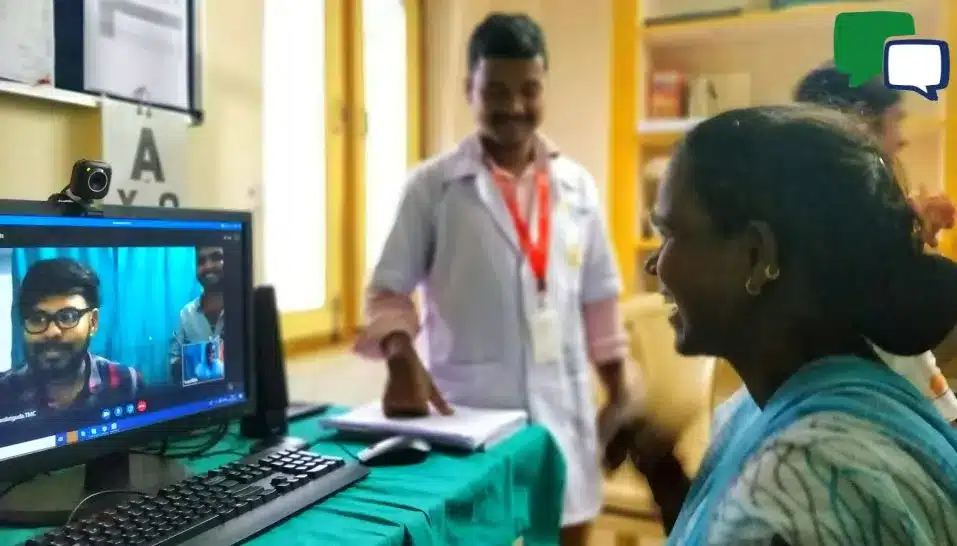Telehealth still lacks acceptance among several sections, including the rural, semi-urban and disadvantaged populations, as they lack the awareness and skills to access it.
Ensuring access, availability, affordability and quality have been perennial problems in the healthcare industry. Ever since the rise of information technology, a solution that has presented itself as a possible saviour is telemedicine.
Defined simply as that which covers the use of technology to deliver clinical care at a distance, telemedicine has the potential to close several gaps that healthcare faces today. Telemedicine played a vital role in preventing disruptions in healthcare during the COVID pandemic. The timely release of the telemedicine practice guidelines in India by the National Medical Commission (formerly Medical Council of India), provided formal structure and legitimacy to the concept.
COVID-19 pandemic enables telemedicine
According to an early report in 2020 by the Telemedicine Society of India and Practo, there was an unprecedented three-fold increase in online consultations during the initial phase of the COVID pandemic. When large healthcare facilities became inaccessible as a result of being re-designated as COVID hospitals, or simply due to fear of getting exposed to infections, telemedicine offered a safe and convenient solution to many.
Telemedicine enabled remote monitoring of COVID patients, and management of mild and moderate COVID patients at their homes, reducing the burden on an overworked and struggling health system. In addition to serving the… Share on XThe Indian government took this opportunity to renew its focus on digital health with the launch of the Ayushman Bharat Digital Mission and the national telemedicine service, e-Sanjeevani. The e-Sanjeevani platform provides the nation’s citizens with an easily accessible and available platform, and has been doing a phenomenal job of popularising this model of healthcare.
Penetration and acceptance in India
While disruptions in the health system have spurred and certainly scaled-up the use of telemedicine in the country, one can argue that the penetration and acceptance of telemedicine is still far below its true potential today. Telemedicine still lacks acceptance among several sections, including the rural, semi-urban and disadvantaged populations. Several patient and provider level gaps preclude it from becoming a favoured option at the time of illness. Digital literacy, competence and self-efficacy are pre-requisites for this intervention to work. Patients lack the awareness and skills to access these systems.
Also read: COVID-19 and the rise of telemedicine in India
Moreover, in most cases it is the responsibility of the patient to choose the physician and the specialisation that they would like to avail services of, which is often difficult for the lay-person. For instance, expecting a patient to know whether they need to consult a nephrologist or a urologist is a lot to ask for. These issues often lead to wasteful visits, that are bothersome not just for the patient, but also for the consulting physician. Physicians often find telemedicine hard-to-use or unfulfilling. With a lack of complete history, physical examination findings and lab investigations, physicians find it difficult to make evidence-based decisions for their patients. Most telemedicine consults are still limited to follow-up care for patients that have had an initial evaluation done during an in-person visit. Most importantly, human touch, that makes conventional in-person healthcare so comforting, is lacking in telemedicine.
Digital health ecosystem revolutionized
Notwithstanding its drawbacks and limitations, telemedicine can still be used to strengthen our health system through carefully designed interventions and adaptations. Improving awareness and digital literacy is going to be crucial for telemedicine acceptance and utilization. Initiatives to improve digital literacy, competence and self-efficacy have to start early, right from the time of schooling or basic education. This is the case not just for patients, but also for the physicians and other healthcare professionals that provide care on these platforms.

The advantages of using telemedicine such as reduction in direct as well as indirect costs such as travel and loss of daily wages, reduced risk of infections, improved efficiency and quality, must be imbibed in both patients and physicians alike. Infrastructure to support its use, such as internet connectivity, provision of shared devices for patients that do not own a smart-phone, and a physician panel that is available for real-time consultations will improve trust and dependency on the system.
“Task shifting” or training non-physician healthcare workers to perform tasks that are usually performed by physicians, can help reduce the burden that patients and physicians face on telemedicine platforms. Trained healthcare workers can capture history and facilitate doctor-patient interactions, removing patient inhibitions while saving time for physicians. Blended physical-digital models of telemedicine have been tried and shown to be successful in bridging several gaps that telemedicine faces today, including bringing in the human-touch that this mode of healthcare lacks. These models have been shown to improve the scope, accessibility and quality of telemedicine care.

Apart from the direct benefits, strengthening this model of healthcare has been recognized as an important step towards building resilient health systems and as a mitigation strategy for future pandemics.
Affordable and accessible
The role of telemedicine in healthcare is currently largely supplementary. However, it is not far from completely replacing some aspects of conventional healthcare. As we continue deploying and scaling up telemedicine, it is vital to ensure that this form of healthcare remains equitable and does not widen the existing disparities in healthcare. While telemedicine can improve health equity, it can also worsen it if we are not cautious. Careful consideration of patient and physician needs, and building adaptations based on contextual requirements will go a long way in making telemedicine the equitable, efficient, affordable, accessible and environmentally friendly intervention that it was always meant to be.
Also Read : ‘Big data analytics will be the backbone for combating pandemics’


















Add Comment